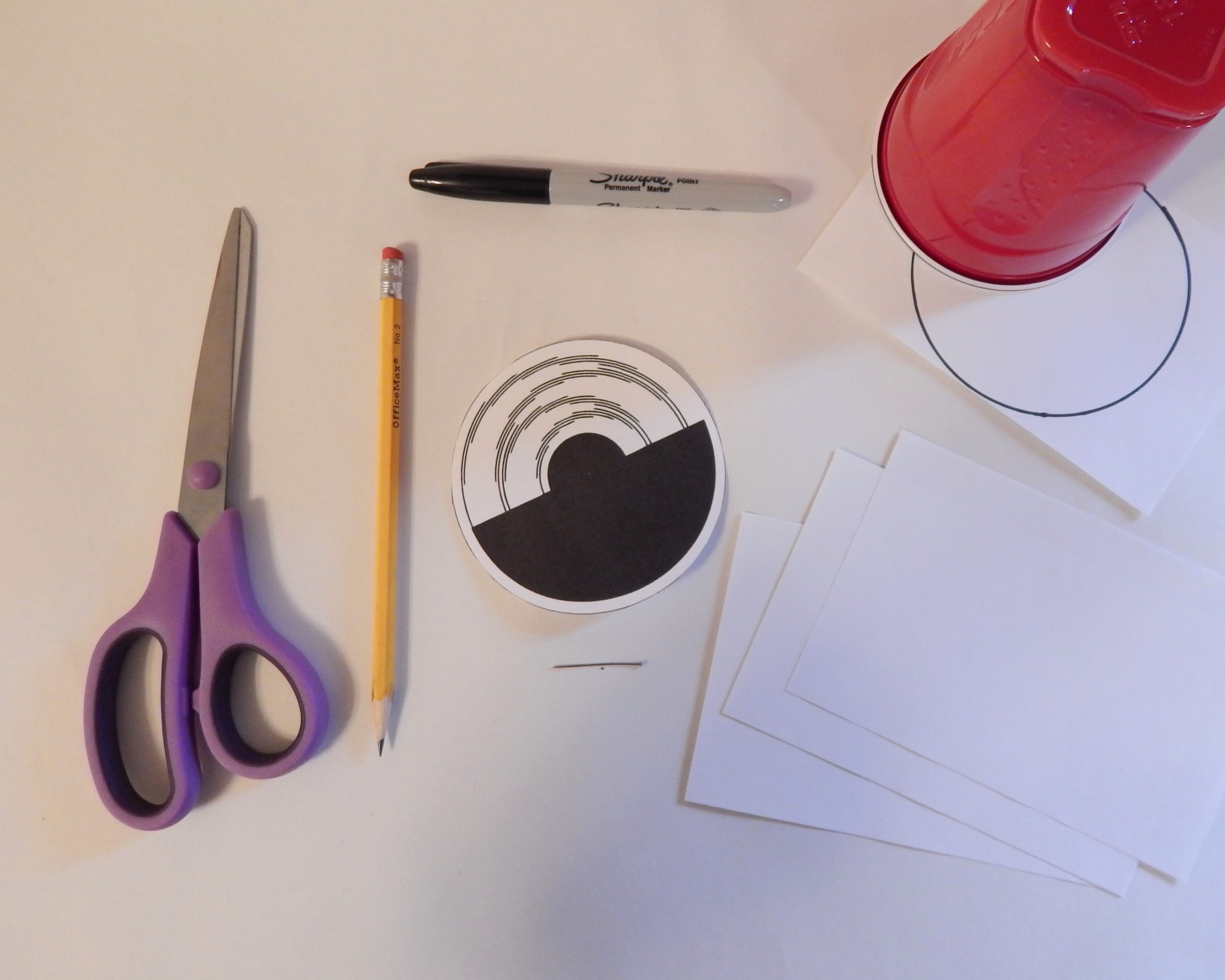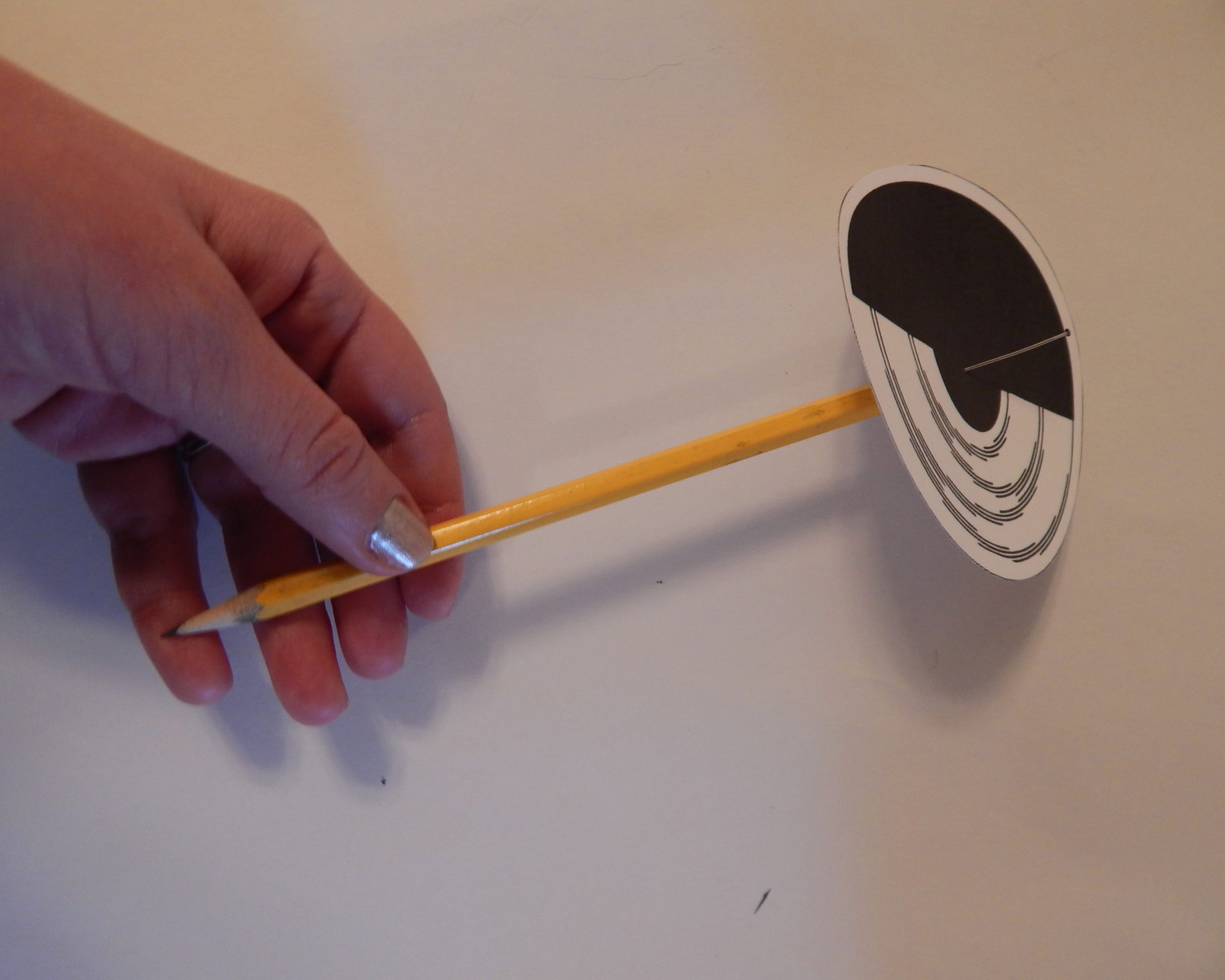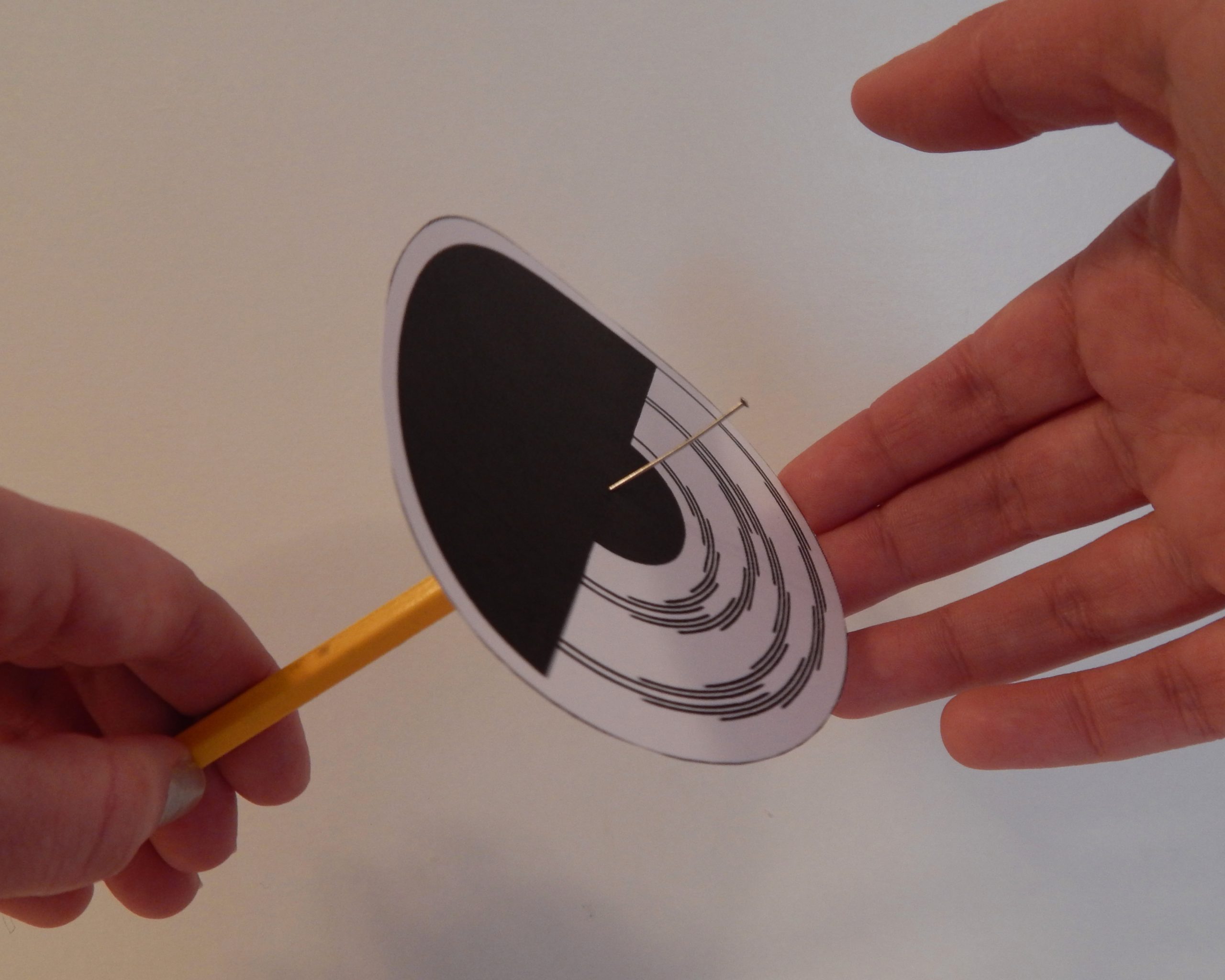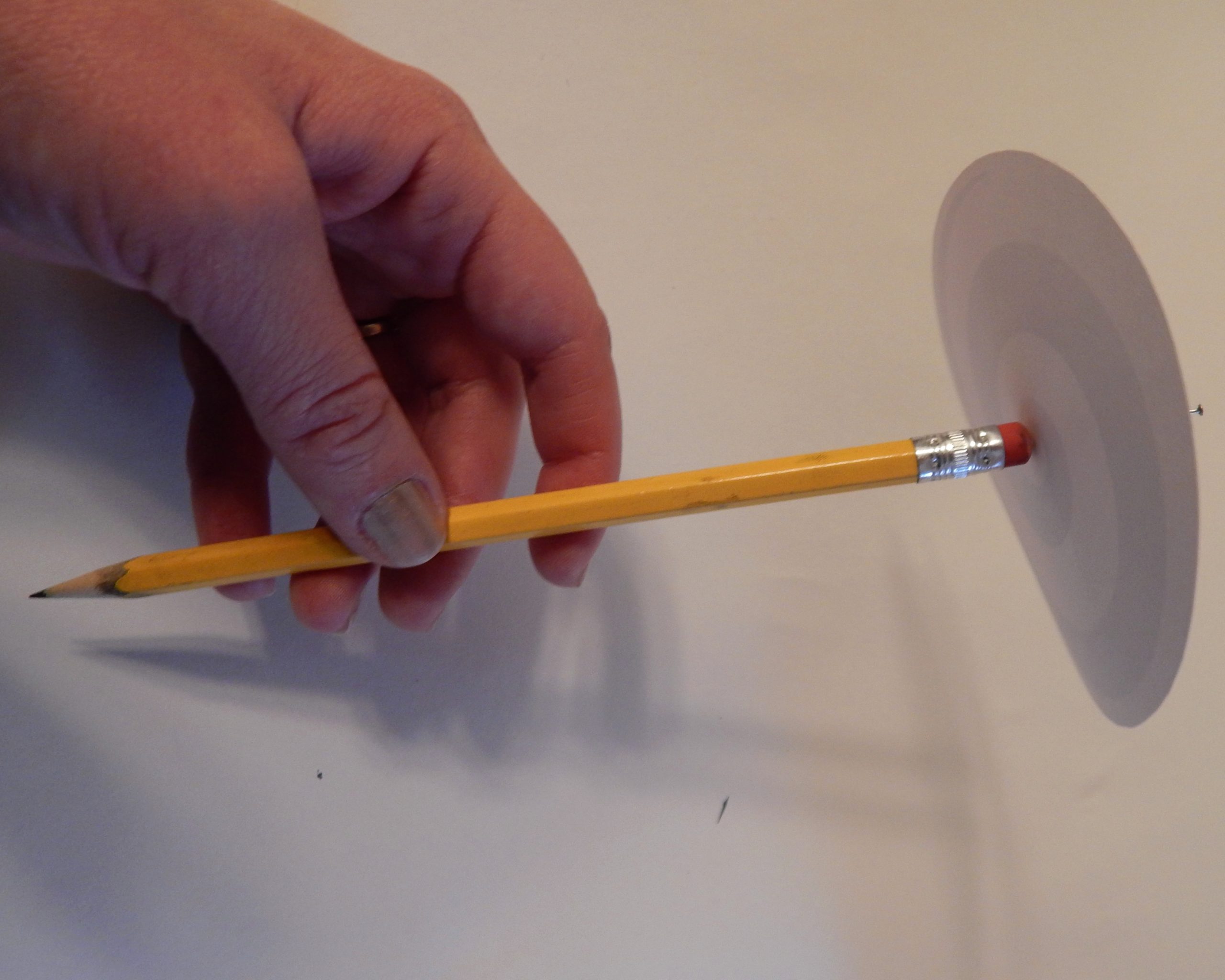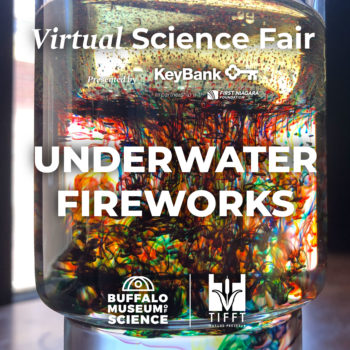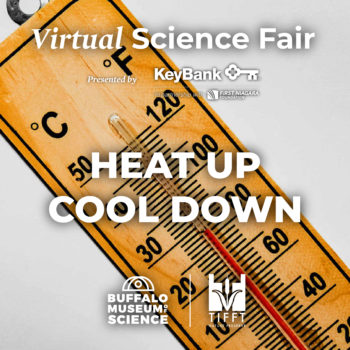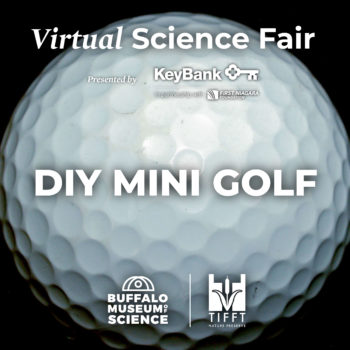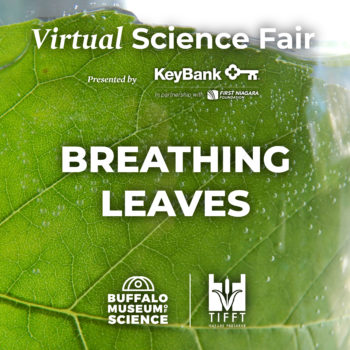Illusion of Color

Have science fun as a family! Complete activities with parental supervision.
Materials:
- White cardstock or index cards
- Printer
- Scissors
- Pin or pushpin
- Pencil with eraser
- Optional: cup, black marker
Procedure
- Print and cut-out the Benham’s Disk image here. If you do not have access to a printer, try making your own black and white design on white paper by tracing a cup, drawing a black spiral or other design, and cutting it out.
- Poke a pin or push pin into the center of the circle and push this into the pencil eraser
- Face the circle towards you. Start spinning the pencil as fast as you can by rubbing the pencil between your hands. What do you see?
- Go into different types and intensities of light and see what happens. Does it make a difference in what you see?
- Survey different people in your household and record what they see. Is everyone the same?
- Be sure to take a picture or video to share in the Facebook comments on the Buffalo Museum of Science or Tifft Nature Preserve pages!
What’s it all about?
Illusions help scientists to explore the powers of our human senses. This illusion is called the Fechner Color Effect named after 19th century scientist Gustav Fechner of Germany. English toymaker Charles Benham was inspired by this illusion to make a spinning top which is now known as Benham’s Top.
Although the pattern is black and white, our brain may interpret it as different colors when it is moving rapidly. Typically people see bands of pale color as the Benham’s disk pattern spins, but not everyone sees the same color in the same way. And it is not fully understood why this happens.
The color receptors in the human eye, called cones respond at different rates to red, green, and blue. The illusion of color may occur because some cones respond quickly while others respond for longer. Our brain interprets the white parts only when all three types of cones respond at the same time.
Try It!
- Design other black and white designs and test them out. Do the patterns create different results?
